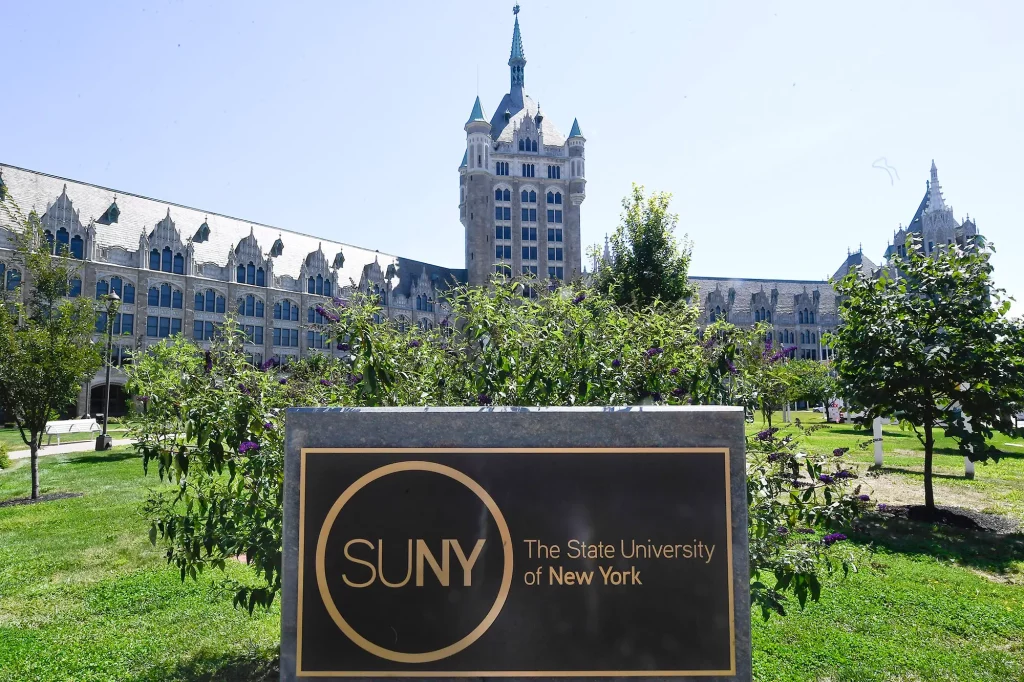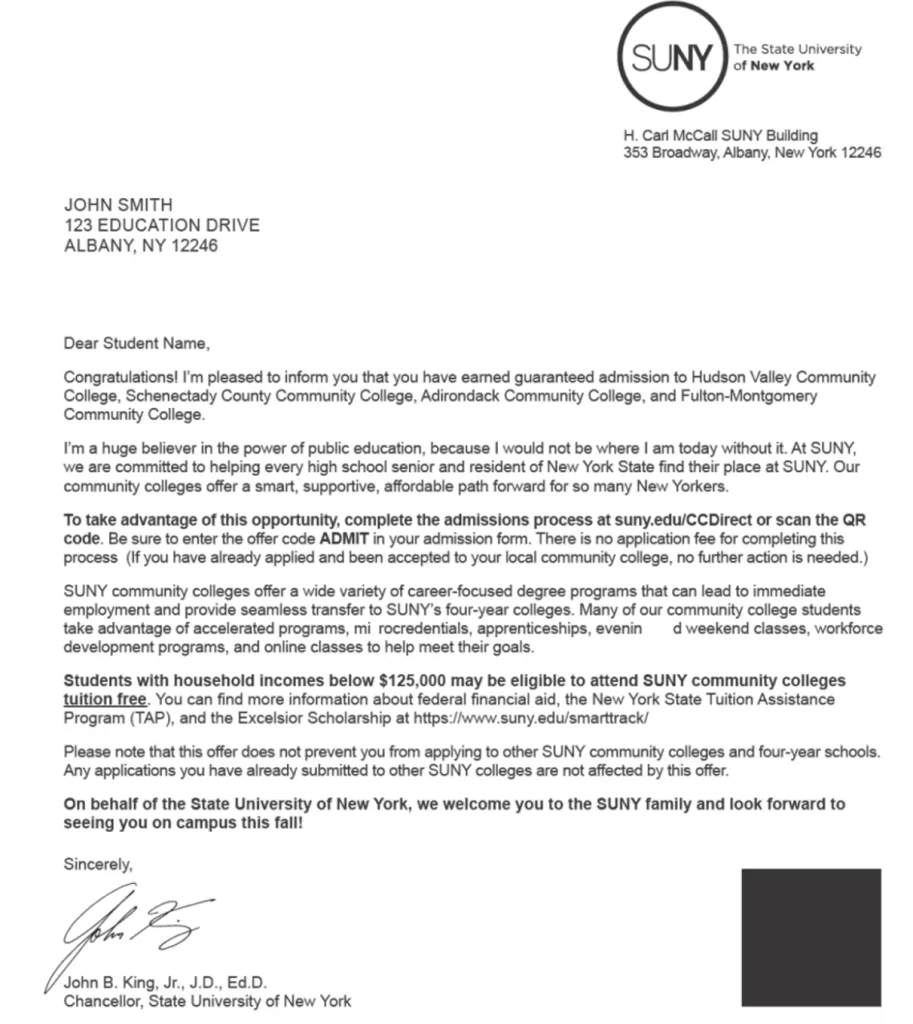In an effort to combat declining student enrollment, colleges are adopting a new approach called “direct admission.” This method involves colleges offering admission to students who haven’t even applied. A recent study by the Common App found that students are twice as likely to take steps toward enrollment if they are directly admitted, reports Emma Davis in EdSurge.

✅ AI Essay Writer ✅ AI Detector ✅ Plagchecker ✅ Paraphraser
✅ Summarizer ✅ Citation Generator
Key Takeaways:
- To address the ongoing issue of low student enrollment, colleges are implementing a “direct admission” approach. This involves offering admission to students without them having to apply.
- A national study by the Common App revealed that students who receive direct admission offers are twice as likely to show intent to enroll. However, this increased intent doesn’t always translate to actual enrollment.
- Research indicates that direct admission is especially effective for non-selective institutions like community colleges.
- While direct admission simplifies the application process and raises college awareness, it’s just one of many barriers students face. Other significant factors influencing enrollment include financial aid, advising support, and students’ perceptions of their abilities.
The Roots of the Enrollment Downturn
Pursuing higher education has long been considered a pathway to personal and professional success. However, the modern educational landscape has been marred by a concerning trend in recent years: a significant decline in student enrollment.
Institutions like the State University of New York (SUNY) have experienced an alarming drop in student numbers, with an overall decrease of about 21% since 2012. This decline is not isolated to four-year institutions. Community colleges, often seen as the more accessible option for many students, have been hit even harder. They’ve witnessed a nearly 35% decrease in enrollment over the same period.
The global pandemic further exacerbated the declining enrollment trend. As campuses shut down and classes moved online, many students opted to defer or forgo their college plans altogether. The uncertainty of the job market, health concerns, and the challenges of remote learning played a significant role in this decision. While there was hope that post-pandemic times would see a surge in enrollments, the recovery has been slow and often limited to specific institutions or programs.
New York’s Direct Admission Initiative
In the face of declining enrollment numbers, institutions are compelled to think outside the box, devising innovative strategies to attract students. The State College of New York has emerged at the forefront of this movement, introducing a groundbreaking initiative that has caught the attention of educators and policymakers alike.
June brought a surprise for many high school seniors in New York. Instead of the traditional college acceptance letters students eagerly await, SUNY dispatched a unique proposition: direct admission letters to their local community colleges. This meant roughly 125,000 students received an offer to secure a spot in a community college without applying.
The process was designed to be as straightforward as possible. Students were provided with a code, “ADMIT,” which they could enter into a simplified form, along with some basic personal information. This hassle-free approach aimed to remove the barriers and anxieties often associated with the college application process.

SUNY’s direct admission initiative wasn’t just a whimsical experiment but a calculated response to a pressing issue. The college has witnessed a staggering 21% decline in enrollment since 2012. The situation was even more dire for community colleges under the State University of New York System umbrella, which saw a nearly 35% drop in student numbers. By offering direct admissions, SUNY hoped to reverse this trend, making higher education more accessible and appealing to a broader demographic.
While SUNY’s approach was pioneering, it wasn’t entirely without precedent. The concept of direct admission is gaining traction across the U.S., with several states piloting similar programs. The goal remains consistent: streamline the admissions process, reduce barriers to entry, and ultimately, boost enrollment numbers.
Open Access vs. Selective Institutions: The Direct Admission Strategy
As its name suggests, direct admission offers a streamlined path to college enrollment, bypassing the traditional, often cumbersome, application process. At its core, this approach aims to simplify and democratize access to higher education. The State College of New York’s initiative is a prime example, but what exactly does “direct admission” entail? Essentially, it’s an offer of guaranteed admission to prospective students without the need for them to apply formally. This proactive method is particularly beneficial for open-access institutions, like community colleges, which typically admit any applicant, regardless of academic achievements. However, there’s a common misconception among potential students, especially first-generation college-goers—those who would be the first in their families to attend college. Many mistakenly equate open-access institutions with selective colleges, leading to hesitations or even deterrence from applying. Tom Brock, director of the Community College Research Center, shares his opinion:
“Direct admission is not about lowering the bar for admittance at community colleges. Rather, it is a means of raising awareness of college options and simplifying the admissions process.”
Ben Castleman, associate professor of public policy and education at the University of Virginia, further elaborates on the psychological impact of direct admission. He believes that by offering direct admission, colleges send a powerful message to students, affirming their potential and worthiness for higher education. Castleman notes,
“Sometimes very small changes to the decision-making environment that lead students to change how they think about colleges as an option… can result in bigger downstream changes in behavior than would be expected given the actual size of the decision change.”
In essence, direct admission not only simplifies the administrative process but also plays a pivotal role in reshaping students’ perceptions about their fit and belonging in the world of higher education.
A Look at the Numbers
The concept of direct admission isn’t just a theoretical proposition. It has been put to the test with tangible results, with Idaho standing out as a pioneering state in this arena. Back in 2010, a study by the National Center for Higher Education Management Systems highlighted Idaho’s concerning position—it had the lowest college-going rate among all states. In response, by 2015, Idaho introduced a statewide direct admission system. The results? Every high school student on track to graduate was automatically admitted to a selection of public higher education institutions, eliminating the barriers of applications and fees. This bold move led to a noticeable uptick in enrollments, with first-time enrollments increasing by 4 to 8 percent per campus. This translates to an average boost of 50 to 100 students per campus, as revealed by a study by researches Taylor Odle and Jennifer Delaney, prominent figures in higher education research.
But Idaho wasn’t the only state to experiment with this approach. The Common Application, a widely used college application platform, piloted direct admission across multiple states. Their findings, released recently, revealed significant behavioral shifts among students. Those offered direct admission were considerably more likely to indicate their intention to enroll in a college. Specifically, in one of the most extensive randomized controlled trials in higher education literature, nearly 32,000 students were observed. The study, led by Odle and Delaney, involved six diverse institutions, ranging from public to private. Students who met specific criteria, such as residency requirements and GPA thresholds, were informed of their guaranteed admission spot.

The results were telling: the directly admitted students were almost twice as likely to submit their simplified application to the institution offering them direct admission. Moreover, these students were 12 percent more likely to apply to any college, suggesting that direct admission might be a gateway to broader college enrollment.
The data also revealed that direct admission had a more pronounced impact on certain demographics. Racial minorities, first-generation students, and low-income students exhibited even higher propensities to apply when presented with a direct admission offer. For instance, George Mason University, a prominent public institution in Virginia, reported receiving applications from regions they hadn’t traditionally seen interest from. Dean of admissions Alan Byrd says,
“A lot of our students from the state of Virginia particularly come from Northern Virginia and the Richmond area, but we are excited to see applications from rural areas of Virginia, where we don’t have the same presence.”
This geographical diversification of applicants underscores the potential of direct admission to reach untapped student populations.
However, it’s essential to note that while the intent to enroll increased, it didn’t always translate to actual enrollment. For example, while the Common App’s direct admission pilot showed promising application rates, the subsequent enrollment didn’t always align. This discrepancy suggests that while direct admission can effectively pique interest and intent, other factors come into play when students make their final college decisions.
Challenges and Future Prospects of Direct Admission
While direct admission has shown promise, it’s not without challenges. Cost remains a significant barrier to college enrollment. Even with direct admission, the financial barrier persists if students are unaware of available financial aid or find the paperwork daunting. There’s also the issue of students’ self-perception. A 2023 report revealed that 26% of high schoolers feared their potential success in college, deterring them from enrolling. Another concern is “undermatching,” where students might settle for less selective institutions despite having the credentials for more prestigious ones. As for the future of direct admission, it’s crucial to strike a balance. As Odle puts it, the program should neither be too exclusive nor too lenient.
“A lot of our students from the state of Virginia particularly come from Northern Virginia and the Richmond area, but we are excited to see applications from rural areas of Virginia, where we don’t have the same presence.”
The next phase of direct admission should focus on overcoming enrollment challenges and ensuring long-term student success.
Follow us on Reddit for more insights and updates.





Comments (0)
Welcome to A*Help comments!
We’re all about debate and discussion at A*Help.
We value the diverse opinions of users, so you may find points of view that you don’t agree with. And that’s cool. However, there are certain things we’re not OK with: attempts to manipulate our data in any way, for example, or the posting of discriminative, offensive, hateful, or disparaging material.